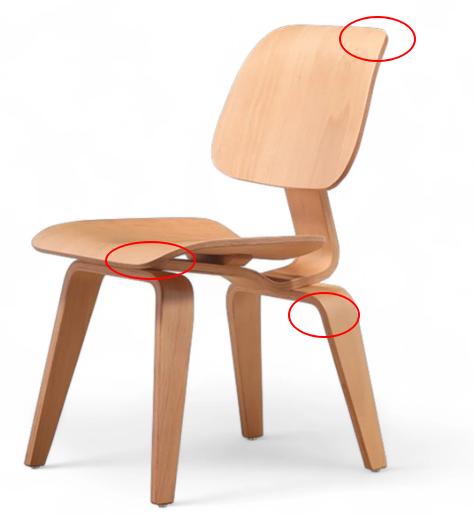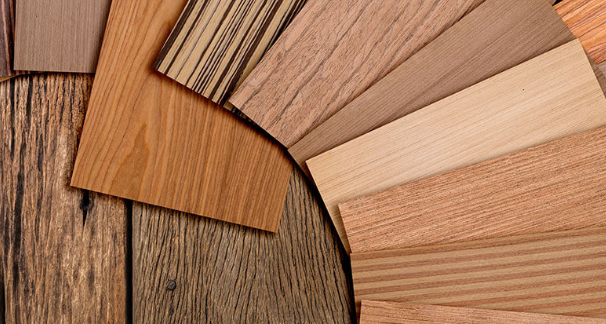 Nov 19, 2025
Nov 19, 2025
 Calvin Wong
Calvin Wong
 63
63
As modern furniture design continues to move toward a balance between comfort, sustainability, and craftsmanship, molded plywood remains one of the most important materials in the dining chair category. Its ability to create fluid curves, its lightweight strength, and its flexibility in finishing make it a favorite among designers, manufacturers, and global buyers.
In 2025, several market and design trends are reshaping how molded plywood dining chairs are made, sold, and used. Below is a comprehensive look at the top trends shaping the industry this year.

Comfort has become a top priority for both residential and commercial buyers. Dining chairs are no longer just functional objects—they must provide proper lumbar support, a comfortable seating angle, and a visually inviting form.
Molded plywood excels at producing continuous curved surfaces. In 2025, expect to see:
More rounded edges
Wrapped-back silhouettes
Seat shells designed with deeper curvature
Designs that visually communicate comfort
This trend caters to a global shift toward “soft modernism” — a modern aesthetic softened by organic forms.

Environmental responsibility is no longer a marketing bonus; it is a requirement.
In 2025, buyers increasingly demand:
FSC-certified veneers
Low-VOC or formaldehyde-free adhesives
Manufacturing with reduced waste
Real carbon-footprint transparency
Molded plywood has an advantage here: compared with solid wood, it uses thin veneers that maximize the yield from every log. Manufacturers who provide proper certifications and eco-focused documentation will have an edge in global procurement.
Warm natural colors are dominating the dining furniture market for 2025. Buyers are moving away from glossy finishes and cold tones, and returning to finishes that feel organic, tactile, and calming.
Popular tones include:
Natural oak
Birch and maple
Walnut (light or medium)
Low-gloss clear coats
Molded plywood panels highlight the continuity of wood grain beautifully, making them ideal for this trend.
Mixed materials continue to elevate the visual richness of dining chair designs. The most popular combinations in 2025 include:
Molded plywood shells + slim metal bases
Molded plywood seat + upholstered seat pad
Wood veneer surfaces + leather accents
This blend enhances both durability and comfort. Hybrid designs also offer more flexibility for commercial buyers such as restaurants, cafés, and hotels who require functional yet stylish seating.
Surface finishing is becoming a major differentiator between brands and suppliers. Buyers are increasingly focused on:
Scratch-resistant coatings
Low-VOC and eco-friendly finishes
UV-cured coatings
Higher durability for commercial use
Anti-fingerprint matte finishes
Since molded plywood is often used in premium or design-driven dining chairs, the quality of the finishing directly affects perceived value.
Consumers and restaurants today prefer personalization. In 2025, “mix-and-match dining chairs” and small-batch customization continue to grow in popularity.
This includes:
Different colors within one dining set
Modified backrest heights
Custom veneer options
Limited-edition surface finishes
Small-batch production for boutique furniture brands
Suppliers with flexible production lines and adaptable molds will attract more B2B buyers who expect shorter lead times and more design choices.
Manufacturing technology is one of the strongest drivers behind new molded plywood dining chair designs.
Key innovations include:
Stronger, more flexible “bendy plywood”
High-pressure cold and hot pressing techniques
Advanced cross-layer glue systems
CNC-cut or digitally measured molds
Vacuum pressing for precise curvature
These innovations enable thinner chair shells, more complex shapes, and more consistent quality. Factories investing in advanced equipment are gaining an advantage in both cost efficiency and design capacity.
Commercial spaces—including cafés, restaurants, coworking spaces, and boutique hotels—continue to boost demand for molded plywood dining chairs.
The most requested features:
Stackability for efficient storage
Stronger edge resistance
Easy-to-clean surface finishes
Lightweight shells for staff handling
Molded plywood inherently provides high strength-to-weight performance, making it ideal for these use cases.
Beyond environmental sustainability, buyers are now paying attention to health-impacting materials. This includes:
Low-allergen surface finishes
Adhesives with extremely low emissions
Eco-friendly foam alternatives for seat pads
Recyclable backing materials
As dining chairs are high-touch products, healthier material choices are becoming a core selling point in premium markets, especially in Europe and North America.
Market reports project steady global demand for molded plywood furniture throughout 2025. However, two pricing trends are becoming more noticeable:
Premium molded plywood chairs have higher potential for price markup, thanks to better finishing and design value.
Raw material costs remain unstable, making supply chain planning essential.
Manufacturers who combine sustainable materials, ergonomic design, and advanced surface techniques will position themselves strongly in the mid-to-high-end segment.
FSC-certified veneers and low-VOC adhesives are becoming global requirements.
UV curing, water-based coatings, and low-emission adhesives give products higher market acceptance.
Small-batch customization and mix-and-match sets are major growth opportunities.
Provide curve analysis, load-bearing test data, and real comfort metrics on product pages.
A credible “green story” sets your brand apart in a competitive furniture market.
Molded plywood offers better shape stability, stronger curved structures, and lighter weight, while solid wood offers superior repairability. Durability depends on design, veneer quality, and surface finishing.
Use properly dried veneers, alternating grain directions, evenly distributed pressure during pressing, and high-quality adhesives. Proper humidity control during storage is equally important.
Yes—its strength-to-weight ratio, design flexibility, and durability make it ideal for restaurants, cafés, coworking spaces, and hotels.
2025 is a transformative year for molded plywood dining chairs. The intersection of sustainability, ergonomic design, advanced manufacturing, and hybrid materials is pushing the category into a new era of refinement and global demand. Brands that invest early in eco-friendly certifications, modern finishes, and flexible production systems will be best positioned to dominate both the residential and commercial markets.